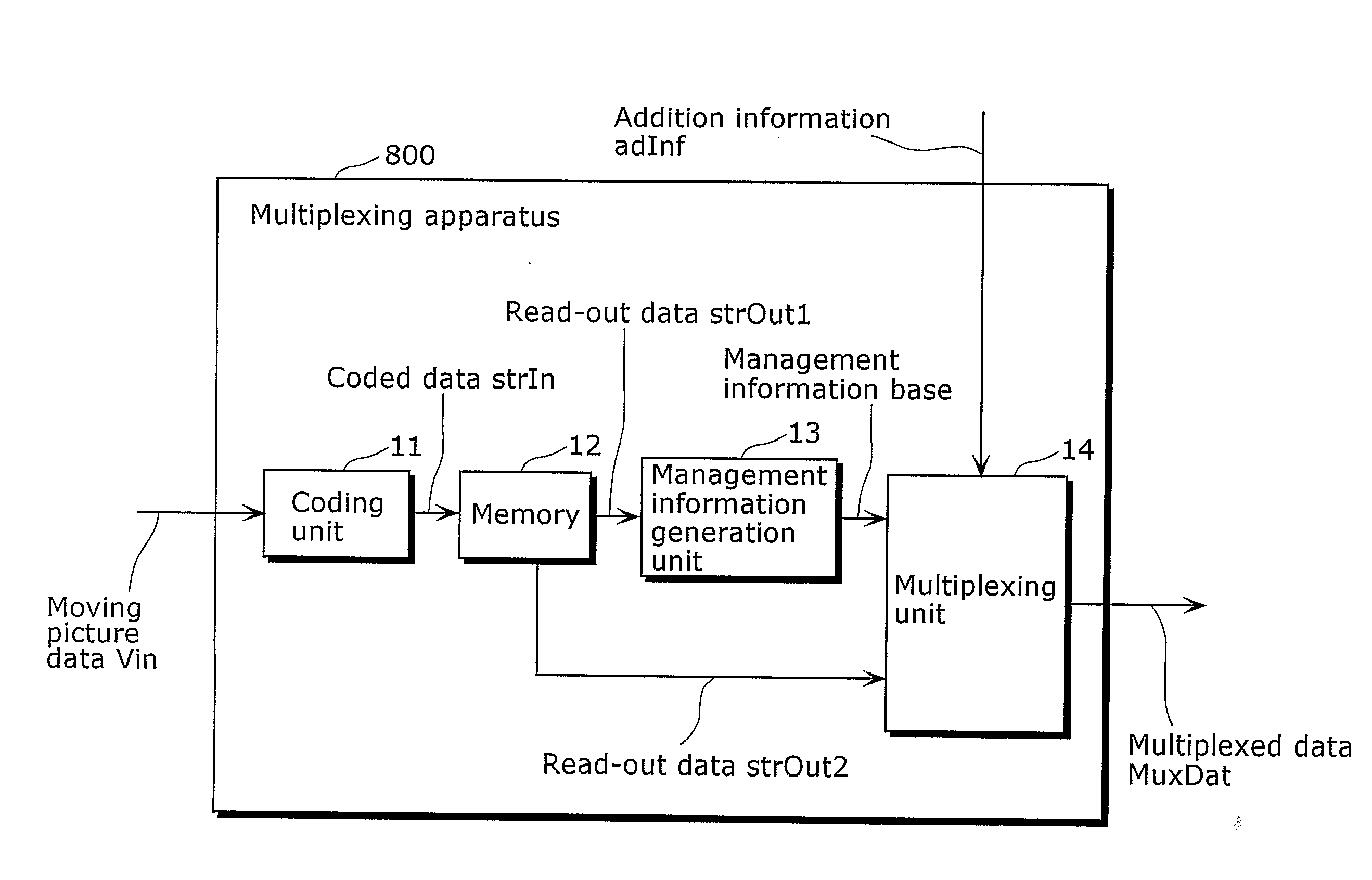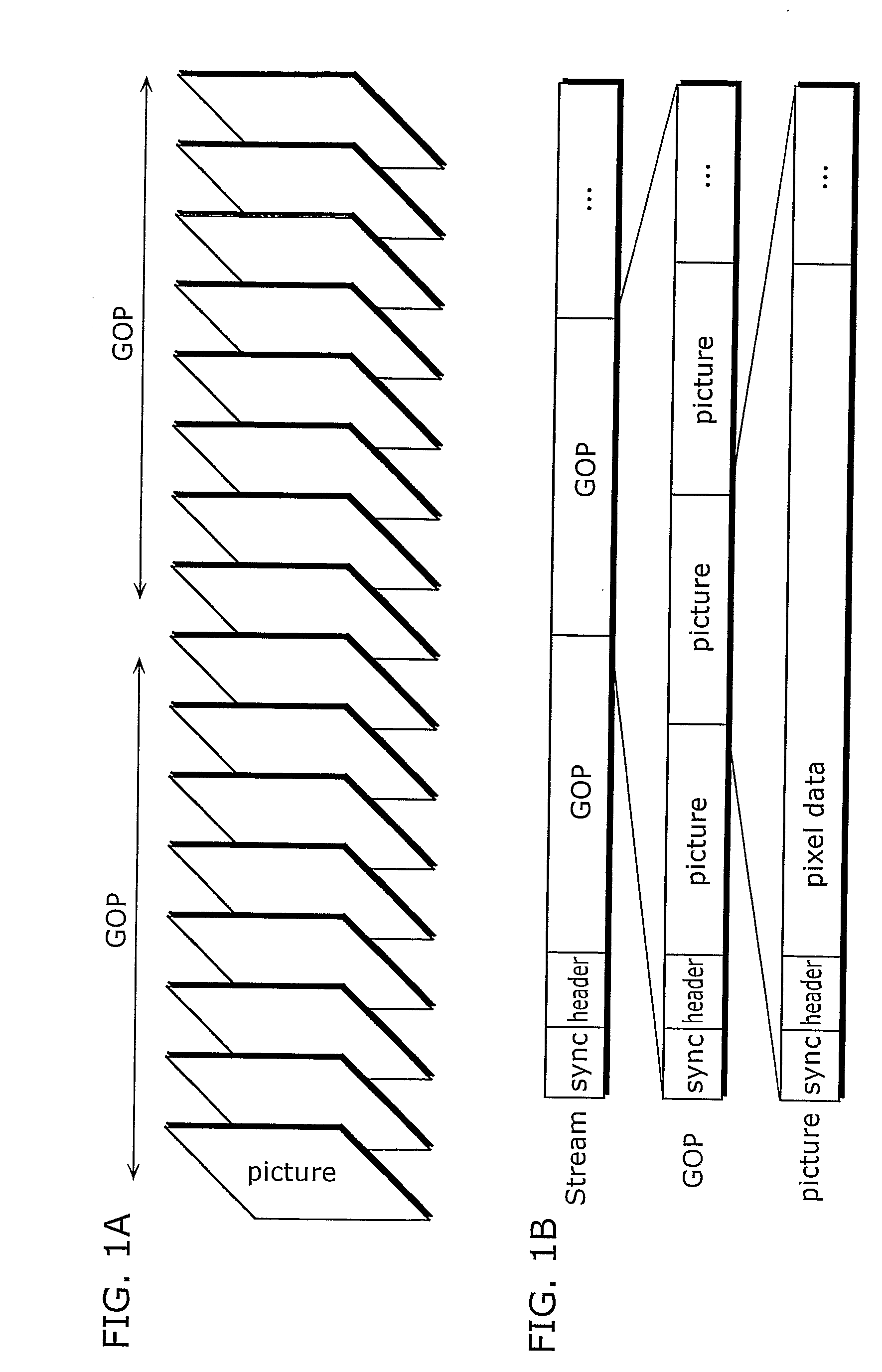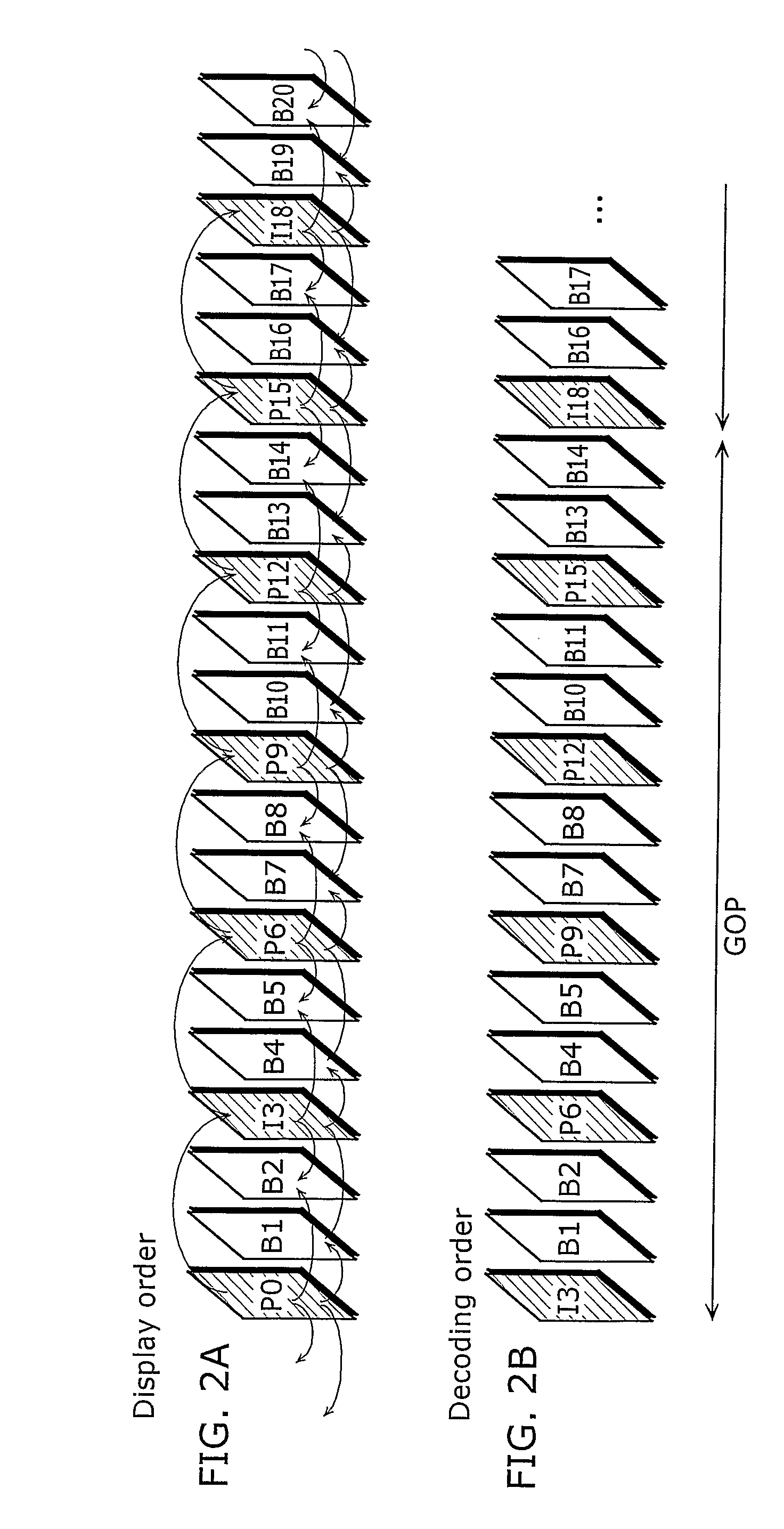Seamless switching between random access units multiplexed in a multi angle view multimedia stream
a multi-angle view and multi-angle view technology, applied in the field of multi-angle view multi-angle view multimedia stream, can solve the problem of invariability of frame ra
- Summary
- Abstract
- Description
- Claims
- Application Information
AI Technical Summary
Benefits of technology
Problems solved by technology
Method used
Image
Examples
first embodiment
[0093]FIG. 13 is a flow chart showing the operation of the multiplexing apparatus in a first embodiment of the present invention. The multiplexing apparatus outputs multiplexed data that can indicate frame delay information of the coded stream to be stored in the multiplexed data.
[0094] First, in Step 301, the multiplex apparatus generates MPEG-4 AVC coded streams. In Step 302, it obtains frame delays of the coded stream generated in Step 301, and goes to Step 303. In Step 303, it judges whether or not all the coded streams to be stored in the multiplexed data have already been generated, and repeats processing of Step 301 and Step 302 until all the coded streams have been generated. In Step 304, it generates frame delay information to be stored as management information of multiplexed data, and goes to Step 305. In Step 305, it generates management information indicating frame delay information in addition to the information generated by a conventional multiplexing apparatus. Last...
second embodiment
[0111]FIG. 16 is a flow chart showing the operation of the multiplexing apparatus in a second embodiment of the present invention.
[0112] First, in Step 401, the multiplexing apparatus sets the value of frame delay used in common in the coded stream to be stored in the multiplexed data. In Step 402, it generates MPEG-4 AVC coded streams based on the frame delay that has been set in Step 401. In Step 403, it judges whether all the coded streams to be stored in the multiplexed data have already been generated, and repeats the processing of Step 402 until all the coded streams are coded. In Step 404, it generates frame delay information to be stored as management information of the multiplexed data, and then goes to Step 405. In Step 405, it generates management information indicating frame delay information in addition to the information generated by the conventional multiplexing apparatus. Lastly, in Step 406, it multiplexes the coded streams generated in Step 401 and the management ...
third embodiment
[0127]FIG. 18 is a flow chart indicating the operation of the demultiplexing apparatus in a third embodiment of the present invention. The demultiplexing apparatus inputs and plays back the multiplexed data generated by the demultiplexing apparatus in the first and second embodiments.
[0128] First, in Step 501, the demultiplexing apparatus demultiplexes the multiplexed data to obtain the management information, and obtains the information concerning the clips to be played back. Clips to be played back are determined based on the playback order predetermined by an instruction from a user or in a play list in the management information or the like.
[0129] Next, in Step 502, it obtains frame delay information of the clips determined as the clips to be played back in Step 501, and goes to Step 503. In Step 503, it determines the frame delay at the time of playing back the clips based on the frame delay information obtained in Step 502.
[0130] In Step 504 and Step 505, it decodes and dis...
PUM
 Login to View More
Login to View More Abstract
Description
Claims
Application Information
 Login to View More
Login to View More - R&D
- Intellectual Property
- Life Sciences
- Materials
- Tech Scout
- Unparalleled Data Quality
- Higher Quality Content
- 60% Fewer Hallucinations
Browse by: Latest US Patents, China's latest patents, Technical Efficacy Thesaurus, Application Domain, Technology Topic, Popular Technical Reports.
© 2025 PatSnap. All rights reserved.Legal|Privacy policy|Modern Slavery Act Transparency Statement|Sitemap|About US| Contact US: help@patsnap.com



